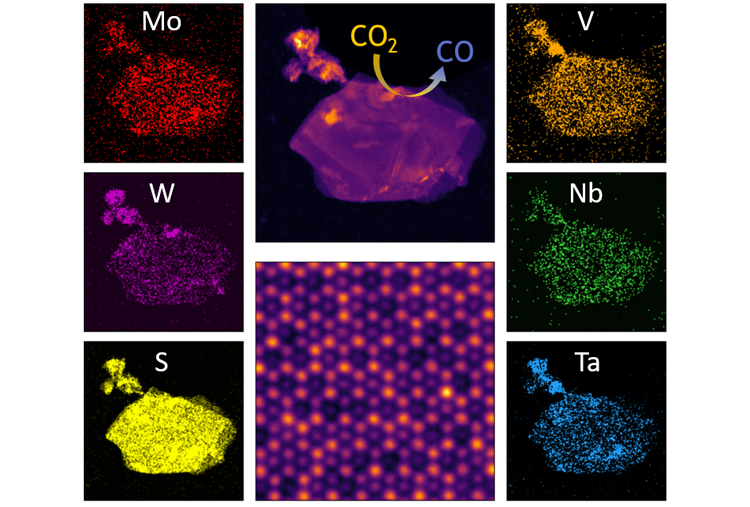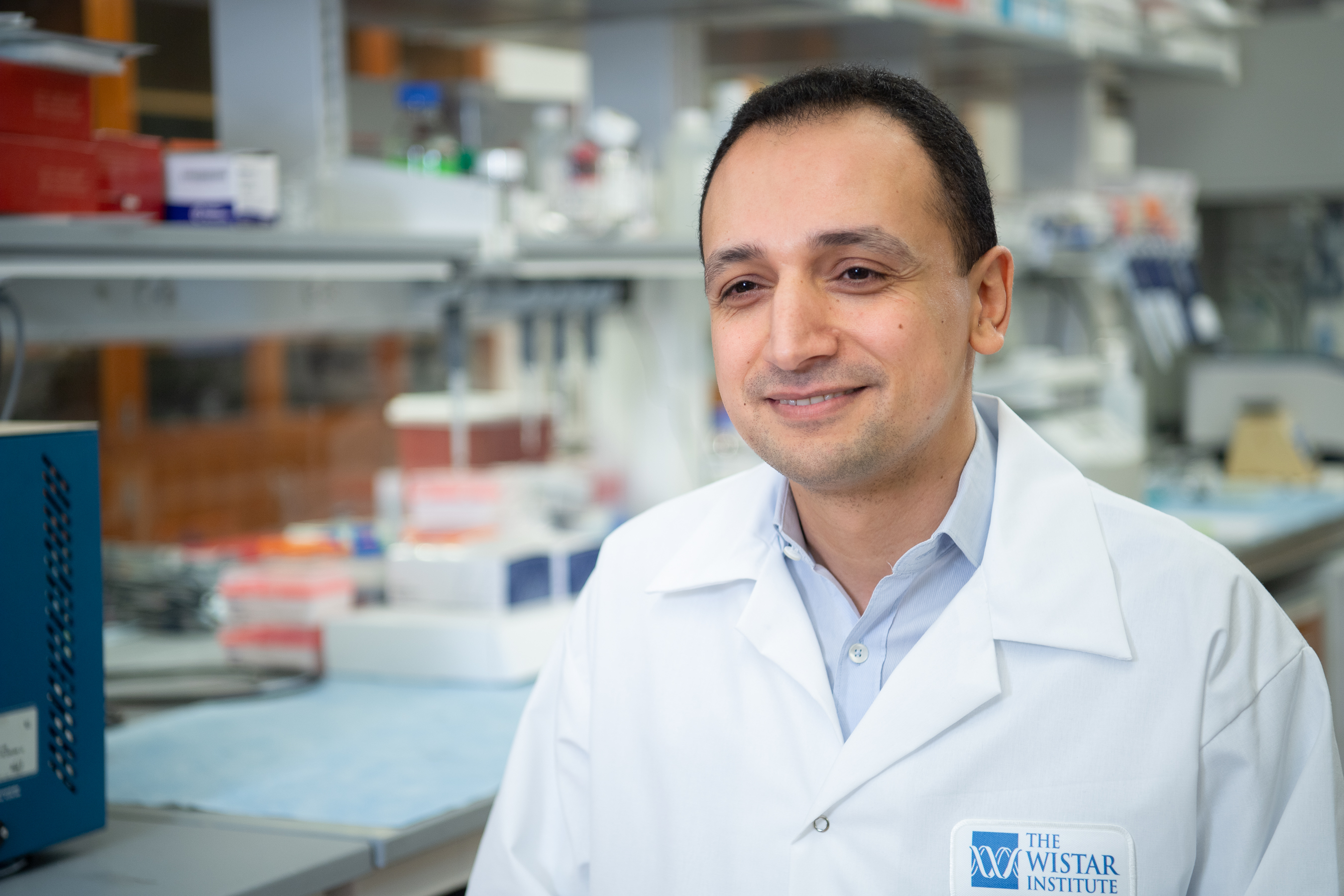Patients with mild Covid-19 infections experience a significantly increased longer lasting reduced sense of taste and smell.
Month: June 2021
Vaping Increases Susceptibility to Coronavirus in Mice
A new study finds that exposure to e-cigarette vapor leads to higher levels of the coronavirus receptor ACE-2 in lungs of mice, with nicotine enhancing that increase in male mice.
New Research on MRI Biomarkers May Aid in Evaluating Potential Treatments for Peripheral Nerve Diseases
Jun Li, M.D., Ph.D., professor and chair of the Department of Neurology at the Wayne State University School of Medicine, recently received a $246,172 R-21 grant from the National Center for Advancing Translational Sciences of the National Institutes of Health (NIH) to develop new strategies for assessing appropriate treatments of peripheral nerve diseases.
Novel Microscopy Method At UT Southwestern Provides Look Into Future of Cell Biology
What if a microscope allowed us to explore the 3D microcosm of blood vessels, nerves, and cancer cells instantaneously in virtual reality? What if it could provide views from multiple directions in real time without physically moving the specimen and worked up to 100 times faster than current technology?
Cooked Crustaceans, Cannabis and a Budder Way
Researchers expose live lobsters to vaporized cannabis and confirm the crustaceans absorb THC. Whether the psychoactive compound affects behavior remains open question.
Survey measures whites’, Blacks’ views on American identity, guns, political violence
Finds considerable disagreement on the use of violence in certain settings

Managing attention deficit disorder by training the brain
Attention Deficit Hyperactivity Disorder (ADHD) affects about 7% of children, with a two out of three chance of persisting into adulthood.
The Future of Investing (Looks Very Different)
What does the future of investing look like? While unemployment ballooned and the global economy collapsed in the months following the onset of the COVID-19 pandemic, an odd thing happened: Wall Street surged. The stock market rose to record levels, relatively new asset classes such as cryptocurrencies headed to the moon, and individual investors had hedge fund managers reeling.
There’s been a lot going on in the world of investing, and some of the change likely is here to stay. Investing and asset management experts at the University of Virginia Darden School of Business share their thoughts.
You’ve Assembled a Diverse Team. Now, How Do You Make It High-Performing?
Many institutions view diversity as a moral imperative. As the evidence builds that diversity also boosts performance, managers face a paradox: While varied perspectives add value, they often cause friction. So it takes enlightened leadership — with high emotional intelligence, compassion and humility — to motivate, integrate and coordinate teams. Darden professors with expertise in building high-performing teams offer insights that maximize the benefits of diversity

Increased use of household fireworks creates a public health hazard, UCI study finds
Irvine, Calif., June 29, 2021 – Fireworks are synonymous in the United States with the celebration of Independence Day and other special events, but the colorful displays have caused a growing risk to public safety in recent years, according to a study by environmental health researchers at the University of California, Irvine.
Hackensack Meridian JFK Johnson Rehabilitation Institute Announces Class of 2021 Fellowship and Residency Program Graduates
Graduating fellows are, Ashley Kakkanatt, M.D. (Brain Injury); Aakash Thakral, M.D. (Pain Medicine). The 2021 residency graduates are, Mina Gayed, D.O.;
Eric Liu, D.O.; Tomas Salazar, M.D.; Mina Shenouda, M.D.
Drug Relieves Persistent Daydreaming, Fatigue, and Brain Sluggishness in Adults with ADHD
Tests of a drug known to stimulate brain activity have shown early success in reducing symptoms of sluggish cognitive tempo in 38 men and women with attention deficit hyperactivity disorder (ADHD.)
NYC Subway Sensors Could Provide Early Warning for Potential Chemical and Biological Threats
DHS works tirelessly with its public transportation partners to help make transit systems safer while maintaining their efficiency.
New Web Resources Can Help Prevent Youth Radicalization
New tools to help parents and educators protect vulnerable young people from online radicalization were released today by the Southern Poverty Law Center (SPLC) and American University’s Polarization and Extremism Research Innovation Lab (PERIL).
The New Orleans Book Festival at Tulane University announces 2021 lineup of best-selling authors
The 2021 New Orleans Book Festival at Tulane University will kick off its inaugural weekend, October 21-23, with a three-day, in-person literary celebration featuring more than 100 national, regional and local authors, including some of the nation’s most beloved bestsellers.
Scuba diver back to doing what she loves, thanks to heart procedure
When she isn’t working at The University of Texas Health Science Center at Houston (UTHealth), 55-year-old Caroline Wolbrecht of Houston loves to scuba dive. However, that hobby was put in jeopardy due to a patent foreman ovale (PFO), a heart condition that she didn’t even know she had for years.
DeKay examines factors that affect how Little Rock congregation members prioritize community issues
UA Little Rock is investigating the influence of income, politics, and religion on how people prioritize important community issues.
Reported cases of myocarditis in younger men following COVID-19 vaccination are rare; vaccination remains important
Mayo Clinic researchers are taking a close look at rare cases of inflammation of the heart muscle, or myocarditis, in young men who developed symptoms shortly after receiving the second dose of the Moderna or Pfizer messenger RNA (mRNA) COVID-19 vaccines. Several recent studies suggest that health care professionals should watch for hypersensitivity myocarditis as a rare adverse reaction to being vaccinated for COVID-19. However, researchers stress that this awareness should not diminish overall confidence in vaccination during the current pandemic.
With photon-counting-detector CT, Mayo Clinic at forefront of CT imaging technology
Performing the first cardiac scan on their new photon-counting-detector CT scanner was a once-in-a-career moment for Joel (J.G.) Fletcher, M.D., and Cynthia McCollough, Ph.D. The medical and scientific directors, respectively, of the CT Clinical Innovation Center describe the arrival of this latest research CT system as a major milestone in CT imaging, one where Mayo Clinic is again at the forefront.
Little Rock Congregations Study Dialogue Reveals How Congregations, Nonprofits Can Work Together to Address Community Issues
The Little Rock Congregations Study (LRCS) research team at UA Little Rock worked with a team of students from the UA-Clinton School of Public Service to host a series of community dialogue discussions during the spring semester to explore how congregations and nonprofits in Little Rock can come together to make an impact on important community issues.
Johns Hopkins Expert Can Discuss Possible Cause of Florida Tower Collapse
In the wake of the devastating collapse of a Miami-area condominium tower, a Johns Hopkins University civil engineer can discuss the possibility that shifting soil beneath the building led to the massive structural failure. Ben Schafer is the Willard and Lillian…
A new piece of the quantum computing puzzle
Research from the McKelvey School of Engineering at Washington University in St. Louis has found a missing piece in the puzzle of optical quantum computing. Jung-Tsung Shen, associate professor in the Department of Electrical & Systems Engineering, has developed a deterministic, high-fidelity two-bit quantum logic gate that takes advantage of a new form of light.
Orphaned baby beavers crisscross NYS for treatment at Cornell
The Cornell Wildlife Hospital helped care for a litter of baby beavers, whose parents were trapped in the Adirondacks, nursing three of the surviving five back to health before sending them for rehabilitation.
Major NIH award to Wayne State to offer state-of-the-art proteomic research capabilities
Wayne State University has been awarded a $1.29 million high instrumentation grant from the National Institutes of Health to purchase a state-of-the-art mass spectrometer for identification and quantitation of proteins in biomedical research samples.
University of Miami researchers are conducting a pilot study to detect variants of the novel coronavirus. In the latest sequencing of specimens, the team recently detected 2 Delta variants among other variants of concern.
Dr. David Andrews is an associate professor in the Department of Pathology and Laboratory Medicine at the University of Miami Miller School of Medicine. His team is leading the University’s variant tracking initiative. Since mid January his team has tested…
Studying how microbiome affects immunity could improve vaccine effectiveness
A new grant will help Iowa State University researchers figure out how the microbiome, or all the microorganisms that live inside and on human systems, affects immunity and the effectiveness of vaccines. Not everyone responds to vaccines in identical ways, and the researchers will search for ways humans can adjust their microbiomes to optimize vaccine response.
Turning Plastic into Foam to Combat Pollution
In Physics of Fluids, researchers have developed a method to turn biodegradable plastic knives, spoons, and forks into a foam that can be used as insulation in walls or in flotation devices. The investigators placed the cutlery into a chamber filled with carbon dioxide. As pressure increased, the gas dissolved into the plastic. When they suddenly released the pressure in the chamber, the carbon dioxide expanded within the plastic, creating foaming.
Pretreating Nuisance Green Algae with Lye, Urea Increases Bacterial Production of Biogas
An international research team reports their success in using urea and sodium hydroxide (NaOH, commonly known as lye or caustic soda) as a pretreatment of algae, which breaks down cellulose and more than doubles biogas production under their initial experimental conditions.
Quantum Random Number Generator Sets Benchmark for Size, Performance
Researchers from China present the fastest real-time quantum random number generators to date to make the devices quicker and more portable. The device combines a state-of-the-art photonic integrated chip with optimized real-time postprocessing for extracting randomness from quantum entropy source of vacuum states.
Butterfly Effect Can Double Travel of Virus-Laden Droplets
In Physics of Fluids, investigators from the University of Florida and Lebanese American University carried out detailed computer simulations to test a mathematical theory they developed previously. They found nearly identical exhalations could spread in different directions when miniscule initial variations are substantially amplified by turbulence. This is the so-called butterfly effect.
Polymers in Meteorites Provide Clues to Early Solar System
Meteorites that do not experience high temperatures at any point in their existence provide a good record of complex chemistry present when or before our solar system was formed. So researchers have examined individual amino acids in these meteorites, many of which are not in present-day organisms. In Physics of Fluids, researchers show the existence of a systematic group of amino acid polymers across several members of the oldest meteorite class, the CV3 type.
Steering Wind Turbines Creates Greater Energy Potential
For wind farms, it is important to control upstream turbines in an efficient manner so downstream turbines are not adversely affected by upstream wake effects. In the Journal of Renewable and Sustainable Energy, researchers show that by designing controllers based on viewing the wind farm system as a coupled network, it is possible to extract power more efficiently.
Hackensack Meridian CDI Scientists Discover New Tuberculosis Treatment Pathway
The compound TA-C is metabolized by TB bacteria – weakening the germ from within like a ‘Trojan horse’ attack
Most US adults fall short of cancer-prevention dietary guidelines
The vast majority of American adults eat a dietary pattern that falls short of meeting national dietary guidelines for cancer prevention, a new study shows.

New 2D alloy combines five metals, breaks down CO2
A new, two-dimensional material from the lab of Rohan Mishra is the first such material to be synthesized and purposefully used.

Wistar Scientists Discover Blood-based Biomarkers to Predict HIV Remission After Stopping Antiretroviral Therapy
New biomarkers that predict HIV remission after antiretroviral therapy (ART) interruption are critical for the development of new therapeutic strategies that can achieve infection control without ART, a condition defined as functional cure. Wistar Scientists have identified metabolic and glycomic signatures in the blood of a rare population of HIV-infected individuals who can naturally sustain viral suppression after ART cessation, known as post-treatment controllers. T
Cell-based immunotherapy shows promise against melanoma
Researchers at Washington University School of Medicine in St. Louis have shown in preclinical studies conducted in mice and human cells that a type immunotherapy based on natural killer cells could be effective against solid tumors, starting with melanoma, a type of skin cancer that can be deadly if not caught early.
Reopening Anxiety? Here’s How to Overcome it According to University of Kentucky Experts
For nearly a year, we relied on masks to help prevent the spread of COVID-19. Now, many are removing the facial coverings, but that doesn’t mean it will be easy to shed the anxiety that accompanies a global pandemic. If you’re having difficulty coping with this added stress, psychology experts at the University of Kentucky say you’re not alone.
Trustr Partners with Seqster to Combine Intelligent Rewards with Patient-Centric Real-Time Real-World Data
Seqster PDM Inc. (“Seqster”), the pioneer in patient-centric healthcare data technology, announced today its partnership with Trustr, a leader in intelligent rewards-based technology driving sustainable behavior change.
Chula Opens Gender Health Clinic to Serve the Transgender Community
The King Chulalongkorn Memorial Hospital of the Thai Red Cross Society, together with the Faculty of Medicine, Chulalongkorn University now features a Gender Health Clinic, a safe space for transgender to get advice about their health problems while cautioning that abuse of hormone therapy can be life-threatening.
FAU Lands $736,000 from NASA to Study the Coastal Carbon Budget from Space
If successful, this research in the Gulf of Mexico’s hypoxia region off the coasts of Texas and Louisiana may demonstrate not just the ability, but also the utility, of remote sensing as an observational technique for characterizing potentially critical but often neglected carbon cycle processes related to marine sediments. Researchers will use satellite images, hydrodynamic modeling and field work in seeking a better understanding of the ocean’s role in the Earth system.
ACI, CDC Launch Redesigned “Healthy Schools, Healthy People” Website
The American Cleaning Institute (ACI) launched a new website for the Healthy Schools, Healthy People initiative, a joint effort of ACI and the Centers for Disease Control and Prevention (CDC) to promote hand hygiene and cleaning practices as a means to prevent the spread of infectious disease in schools and reduce illness-related absenteeism.
Just Enough Information Will Motivate Young Children to Learn, Drive Curiosity
Preschool children are sensitive to the gap between how much they know and how much there is to learn, according to a Rutgers University-New Brunswick study.
Air pollution from wildfires impacts ability to observe birds
Researchers from the University of Washington provide a first look at the probability of observing common birds as air pollution worsens during wildfire seasons. They found that smoke affected the ability to detect more than a third of the bird species studied in Washington state over a four-year period. Sometimes smoke made it harder to observe birds, while other species were actually easier to detect when smoke was present.
This crystal impurity is sheer perfection
Scientists at Berkeley Lab and UC Berkeley have developed a nanoparticle composite that grows into 3D crystals. The new 3D-grown material could speed up production and eliminate errors in the mass manufacturing of nanoscale photonics for smart buildings or actuators for robotics.
Alerta dos especialistas: 4 benefícios da cirurgia robótica da coluna vertebral
A cirurgia robótica, ou cirurgia assistida por robô, permite que os médicos realizem muitos procedimentos complexos, incluindo aqueles realizados na coluna vertebral, com mais precisão, flexibilidade e controle do que as técnicas convencionais.
Advertencia del experto: 4 beneficios de la cirugía robótica de la columna
La cirugía robótica, o cirugía mediada por robot, permite a los médicos realizar muchos procedimientos complejos con más precisión, flexibilidad y control que las terapias convencionales, como aquellos que involucran a la columna.
Researchers discover unique ‘spider web’ mechanism that traps, kills viruses such as SARS-CoV-2 and influenza
Immunologists at McMaster University have discovered a previously unknown mechanism which acts like a spider web, trapping and killing pathogens such as influenza or SARS-CoV-2, the virus responsible for COVID-19.
The evolution of axial patterning
Body axes are molecular coordinate systems along which regulatory genes are activated. These genes then activate the development of anatomical structures in correct locations in the embryo. Thus, the body ensures that we do not develop arms on our heads or ears on our backs. In many organisms, the main body axis is regulated by the β-catenin signaling pathway. In a new article in Nature Communications, a research group led by Grigory Genikhovich at the University of Vienna has found that the way the main body axis of sea anemones is patterned by different intensities of β-catenin signaling is similar to that of sea urchins and vertebrates. This suggests that this axial patterning mechanism already existed about 650 million years ago.
Laura T. Pizzi, PharmD, MPH Joins ISPOR as Associate Chief Science Officer
ISPOR—The Professional Society for Health Economics and Outcomes Research announced that Laura T. Pizzi, PharmD, MPH has joined the Society’s leadership team as Associate Chief Science Officer.